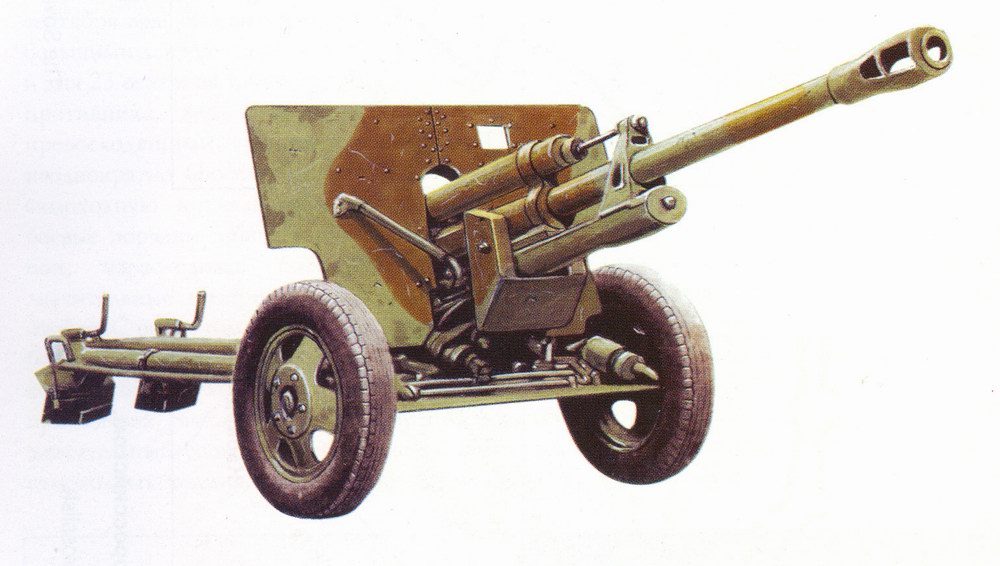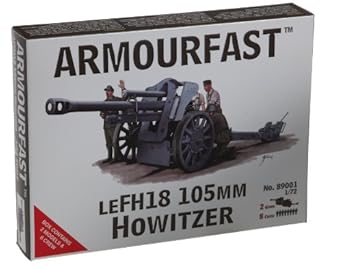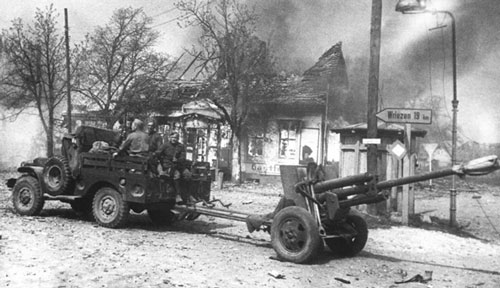Artillery galore! Project "Let the Guns Speak"
(or Get your artillery finished! - Written before my Bagration photos)
I built quite number of artillery pieces for the D Day landing scenario we played a few weeks ago. Did not have time to get everything based, so I have been beavering away at these. Also have quite a few that were un-built or part built from the Kursk battle last year. Artillery crew needing painting and basing too.
Bases built and some flocked, in my current habitual autumn colour scheme, and allowing some snow for the Russki's. I obtained a number of JB Post-war 105mm Howitzers at bargain basement price, so I decided to bend time a bit, and employ these as medium artillery during WW2. Would also be useful for post-war / Korea / Cold war scenarios. I had purchased a Korean war set off Trade Me some time ago, and have some Persing Tanks that would do just fine for a Korea Battle. All to often that is a forgotten war, overshadowed by WW 2 and Vietnam.
So on my workbench now we have:
Russians:
5x Zis 3 guns (Italeri); to make a total battery of 11 when added to the fully built ones.
- done
Italeri's Zis Gun and Crew (Photo WW2 Plastic Soldiers)
The box always brings a smile to my face. The Crew are called "Servants" - good old google translate!
4x M 30 122mm Howitzers (Zvezda) - done
2 x 37mm Antitank Guns (Zvezda); battery of 4 - done
2 x 37 mm AA Guns (Zvezda) - pending
Western Allies:
2 x 17 Pounder Antitank guns, another 2 on the way off TradeMe (NZ Ebay equivalent) (Matchbox, me thinks)
- base-coated
This kit has become quite hard to come by.
7 x 25 Pounder Guns (Airfix and Matchbox) - done
7 x 6 Pounder antitank guns (Airfix) - done
2 x Bofors AA Guns (Airfix)
- 1 done, one built
Un-built: 3 more Bofors,
- all built
5 x 5.5 inch Field guns w Matadors
- guns built, base-coated, Matadors 2 halfway built, 3 base-coated; (Another 2 models are in the post as I write) Tractors for the Bofors guns halfway through building process:
Still need loading trays and wheels
Germans: 2 x LeFH 18s (Armourfast)
Only to be based, the portly crews to be based and painted
Portly Armourfast German Artillery officers. Obviously life was good for them in occupied Europe
They would have lost that tube around the middle quite rapidly in a Soviet PoW Work Camp
Photo Plastic Soldier review
2 x Nebelwerfer (Hasegawa) 1x Pak 40 (Matchbox)
Quite handy: Many of the artillery pieces come with tractors and limbers, all of which have many other uses
As usual I have been side-tracked to research the history...
The Zis-3:
 76 mm Divisional field gun model 1942 (Zis-3)
76 mm Divisional field gun model 1942 (Zis-3)
The design work on the ZiS-3 started in the end of 1940 at the the Artillery Factory No. 92 under supervision of V. G. Grabin, the chief designer of medium caliber Soviet guns. There was no order for this work; moreover, at this time the attitude toward such development programs on the part of artillery commanders, such as Marshal Kulik, the head officer of Soviet artillery, was extremely negative. So the project was run purely on the initiative of Grabin, his design bureau and the Artillery Factory No. 92 head and his deputies. None of them informed state authorities (i.e. Marshal Kulik) about the ZiS-3 project.
It was a combination of the light carriage from the 57 mm ZiS-2 anti-tank gun and a powerful 76.2 mm barrel from the previous divisional field gun F-22 USV. In order to decrease the gun's recoil a muzzle brake was installed. This allowed the barrel to be mounted on a relatively light carriage without the risk of mechanical damage when firing. In comparison with the F-22USV gun, the ZiS-3 utilized better production technology. Many parts of the gun were cast, stamped or welded in order to reduce the amount of machining work. As a result, the amount of work required to construct a single ZiS-3 gun was three times less than that of the F-22 USV gun, and the cost only two thirds that of an F-22 USV.
The first ZiS-3 gun was hidden from the watchful eyes of state authorities, who continued to ignore the Red Army's need for light and medium field guns. The main argument was that German heavy tanks carried exceptionally strong armour. Germany did not have such tanks in early 1941 and this misinformation was actually the result of successful Nazi propaganda. Kulik had believed the propaganda and stopped production of light 45 mm anti-tank guns and 76.2 mm divisional field guns.
The beginning of Operation Barbarossa showed that the early German tanks had weaker armour than anticipated. Some were even vulnerable to large caliber DShK machine guns. Pre-war models of 76 mm divisional guns penetrated German vehicles with ease, but almost all these guns were lost or destroyed.
Some were later used against Soviet forces as Panzerjäger self-propelled guns, built on captured or obsolete chassis. Kulik ordered that mass production of 76.2 mm divisional field F-22 USV guns be relaunched. Grabin and the head staff of Artillery Factory No. 92 decided to organize the mass production of ZiS-3 guns instead of F-22 USVs. They succeeded, but ZiS-3 was not officially tested and adopted for Red Army service.
The Red Army was in urgent need of these guns, the guns themselves were fine and numerous due to improved production technology, but all of them were held in stock at Artillery Factory No. 92, since the military representatives refused to receive non-official guns. After some internal struggle between Grabin's team and military representatives, ZiS-3 guns were finally transferred to the Red Army under personal responsibility of Grabin and Artillery Factory No. 92 head staff.
Combat experience showed the superiority of ZiS-3 over all other types of divisional level field guns. This allowed the ZiS-3 to be presented to a group of state authorities headed by Joseph Stalin and thus obtain all needed approval. After the demonstration was over Stalin said: "This gun is a masterpiece of artillery systems design." There was a five-day official state test run in February 1942. The result of this test was quite clear - ZiS-3 was adopted by the Red Army as Divisional field gun model 1942 .
Grabin and his team soon begun to improve on the technology used in the ZiS-3 mass production. Artillery Factory No. 92 was equipped by conveyor assembly lines, which allowed the factory to produce ZiS-3 in even greater numbers. The young men who worked on Artillery Factory No. 92 were exempt from conscription. By the end of World War II, ZiS-3 was the most numerous Soviet Army field gun. The total number of ZiS-3s produced exceeded 103,000 pieces. The Finns captured 12 units, and designated them 76 K 42.
After the war ZiS-3 mass production ceased. It was replaced by the next model of divisional field gun, D-44, which had a larger caliber (85 mm) and better anti-armour capabilities. But it weighed much more and its mobility was thus inferior to that of the ZiS-3.
Combat history
Soviet soldiers liked ZiS-3 guns for their extreme reliability, durability, and accuracy. It was easy to maintain these guns and train novice crews with them. Light carriage allowed the ZiS-3 to be towed by trucks and heavy jeeps (such as the American lend-leased Dodge 3/4) or even hauled by the crew.
ZiS-3 had good anti-armour capabilities, it could knock out any German light and medium tank with its armour-piercing round. The appearance of the Tiger I and later the Panther, however, made the lives of ZiS-3 crews much harder, for their frontal armour was immune except for some small ballistic windows.
A battery of ZiS-3 consisted of four guns, with three batteries combined into a division, or battalion. Independent anti-tank regiments consisted of six batteries with no divisions. In addition to the gun batteries there was a staff battery which included a fire control section.
The ZiS-3 saw combat service with North Korean forces during the Korean War (1950-1953).
During the Cold War many ZiS-3s were transferred to different Soviet allies, and often resold to Third World countries. Armies of several African and Asian countries still have ZiS-3s in active service today. Moreover, these guns are still used in combat during numerous local conflicts and border skirmishes.
All Soviet ZiS-3s were officially withdrawn from active service. Some of them were scrapped, some were transferred to holding facilities and others were converted to Great Patriotic War memorials. Such memorial cannons are quite common in modern Russia and Belarus. The Russian Army uses some ZiS-3s as unit and barrack historical decoration in artillery units. Other surviving ZiS-3s are still operable. Sometimes ZiS-3s are used as salute guns or in re-enactment and military shows.



























































